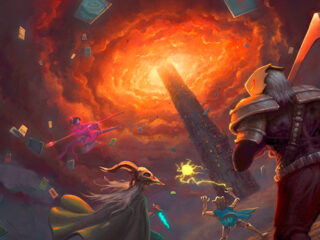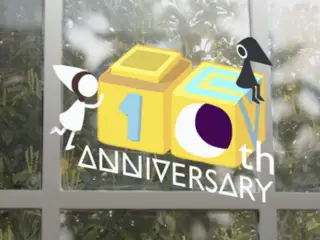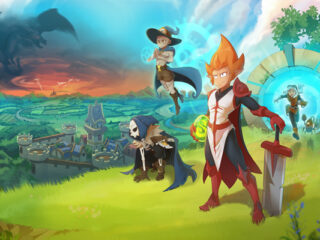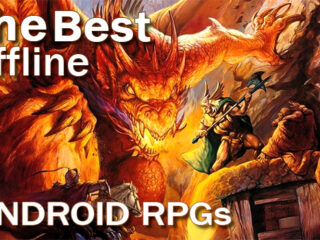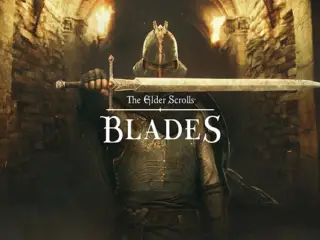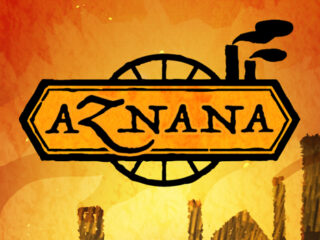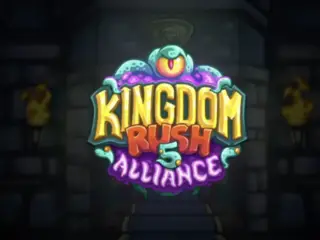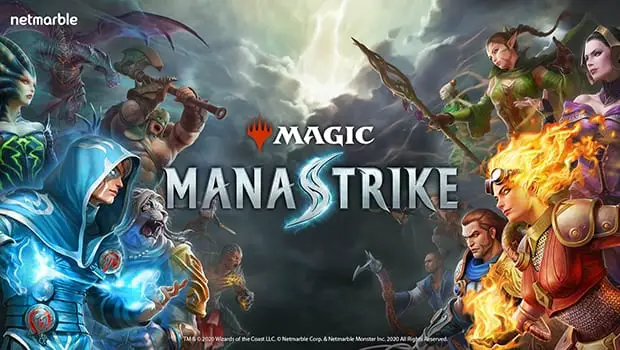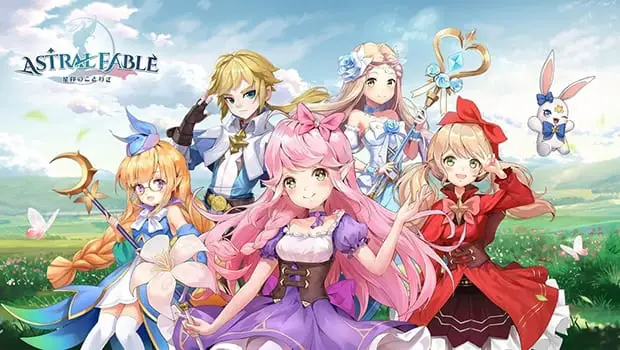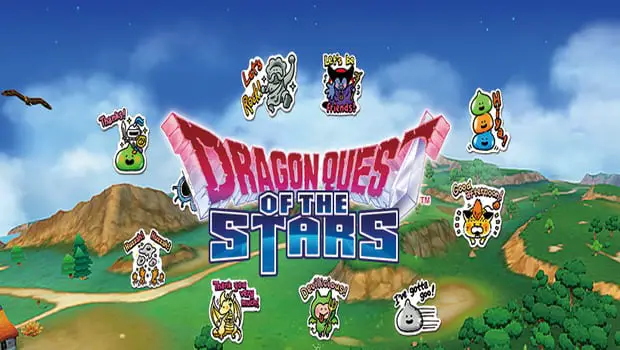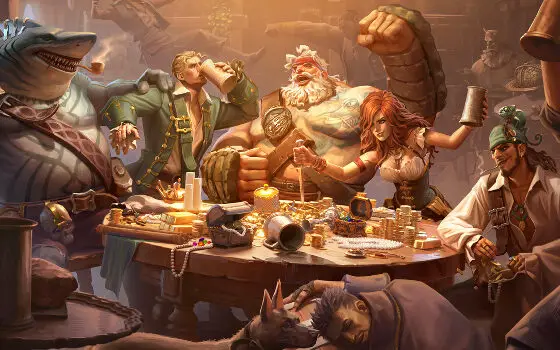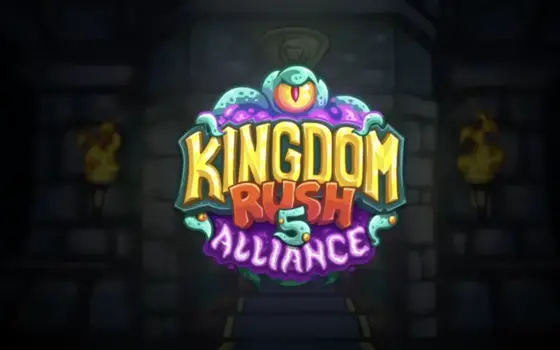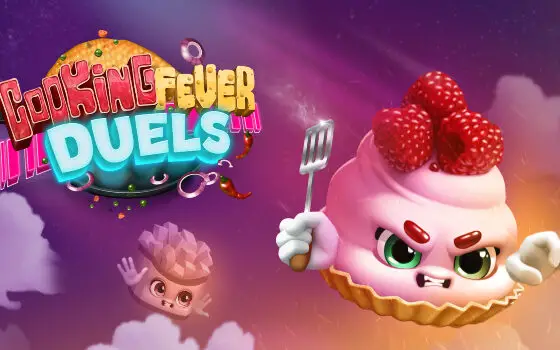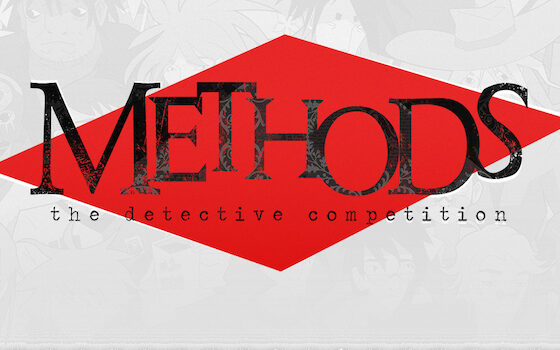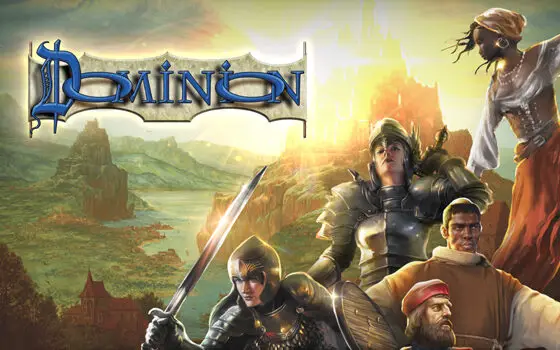Magic: ManaStrike Realized in 3D
Magic: The Gathering comes to life in Magic: ManaStrike, a free-to-play real-time strategy game developed by Netmarble Corporation for Android. You assume the role of summoner. Unlike the card game, you get to see your units animated in 3D on the battlefield, a dream come true for lovers of this series. Pick your planeswalker, build your deck, and join the fight. The fight for what, you ask? Well, that’s an excellent question.
I’ve loved Magic: The Gathering since discovering it in college. I remember when planeswalkers were introduced as playable units. Although I haven’t kept up with the series faithfully over the years, it’s great to see the prominent role these unique units now fill. Until they made an appearance in the game, you were the planeswalker. I suppose you still are, because planeswalkers are basically summoners anyway. History lesson aside, let’s dive into what makes this game great and what makes it suck beyond belief.
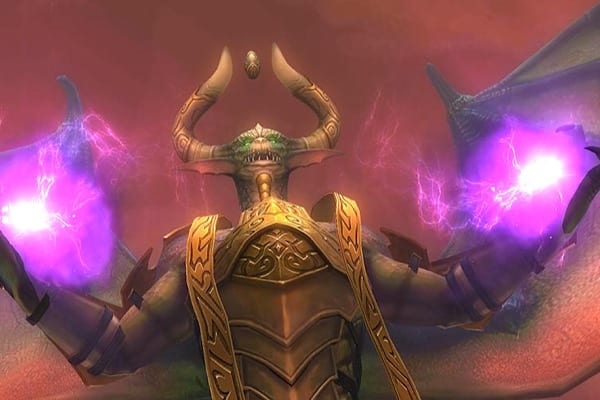
The Magic Begins, And Ends, Swiftly.
When you open Magic: ManaStrike on your Android for the first time, you’ll be greeted with a request to download even more data before the game becomes playable. That’s fine. You can still explore the planeswalkers and their corresponding decks while this occurs in the background. A tutorial will guide you through your first several battles. Once the tutorial is complete, congratulations! You’ve just seen everything this game has to offer. The end.
So now let’s backtrack and examine this game for what it is. Pretty good and, somehow, simultaneously pretty lousy. A key element of Magic: ManaStrike is the utilization of planeswalkers and, for me, they’re the only feature of this game that doesn’t get old. Planeswalkers are legendary summoners and each represents one of five colors: white for light, black for dark, red for fire, green for nature, and blue for water. There’s a little more to it than that, though. For example, blue also encompasses psychic abilities and green includes poison attacks.
Unlike other iterations of Magic: The Gathering, you automatically begin to accumulate mana at the start of each battle. Whereas in the traditional card game you need specific types of mana to use units of a particular color, mana in Magic: ManaStrike is universal. You only need the specific amount required to cover the cost of summoning. This means that a red card may cost three mana in general, but not specifically three red mana. Units attack automatically and do not consume mana as they would with the table-top version of the game.
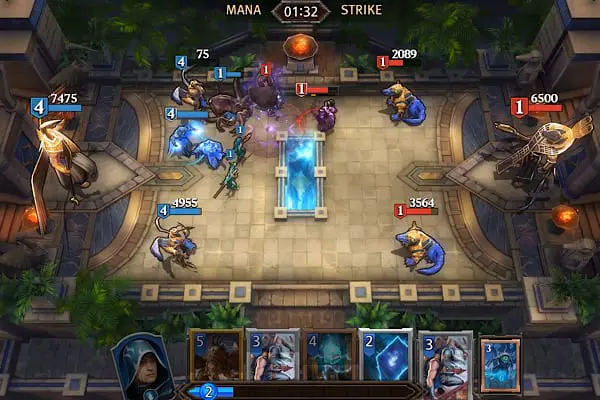
The Tutorial
Once you’ve selected your planeswalker and deck, you’ll begin training. The server will connect you with a random player and the fight is on. Both you and your opponent have one guardian and two sub-guardians. The goal is to fight through your opponent’s defenses to destroy at least one more of their guardians than they destroy of yours before the three-minute timer expires. The race to accomplish this was fairly exhilarating. For example, if you destroy only one of their sub-guardians but they don’t destroy any of yours, you win. However, you can also just destroy one sub-guardian and then the main guardian and win. In the event of a tie, sudden death will extend the match for 60 additional seconds. This ends either when a guardian of any kind is destroyed or in a second stalemate, which means game over and the tie is recorded.
You’re rewarded with additional cards, experience for leveling up, and gold after battle. Once the tutorial is over, you’re let loose to level up your deck. That’s it. There is no endgame. Now your task is simply building your deck and perpetually leveling up. You have the option to join a team of other players and trade cards or chat. You can also compete in two events that seem to alternate every other day, Standard and Draft. You’ll win gold to level up your cards…or more gold to level up your cards…or you might win more cards.
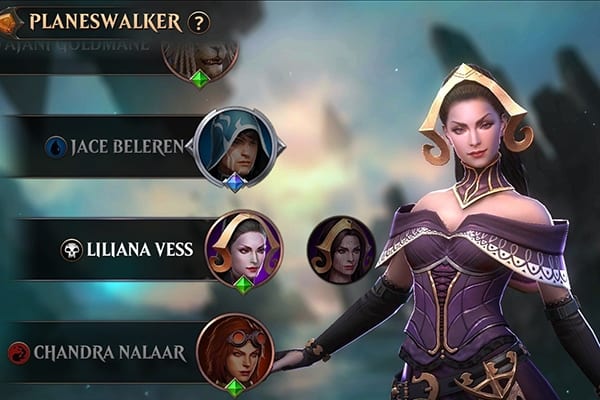
Magic: The Scattering
Spend real cash to buy gems; otherwise, they’re rarely earned in combat. Their only use is to buy planeswalker emojis or even more gold. By now you know what gold is good for: more cards or leveling up. This isn’t terrible in theory, except it doesn’t get you anywhere. The planeswalker emojis are fun to throw out when battle commences or when the tide turns for better or worse. However, only gems can unlock emojis. Had emojis been battle rewards, they would have been even more enjoyable.
You can battle your friends for hours, but there is no campaign to tackle. Magic: ManaStrike for Android features the Magic Pass, which is basically a system to reward you for completing achievements, such as summoning a certain amount or type of cards. However, you can only unlock a limited amount of achievements within a 24-hour period.
I’m in love with the concept of this game. Real-time combat in Magic: The Gathering’s universe? Count me in, buddy. Planeswalkers, monsters, and fully animated attacks? I would absolutely throw money at that. But the lack of a campaign or any direction at all really makes this game feel like a beta version for something greater. It’s not that there’s no fun to be had. It just only lasts as long as your first three-minute battle.
Is it Hardcore?
No.
The only thing hardcore about Magic: ManaStrike is how fast it falls after the tutorial. This is nothing but a swipe at your wallet for aimless gameplay. Even a short campaign would have offered some substance. With nothing to aim for, there’s no sense of accomplishment and therefore no magic to be found.

